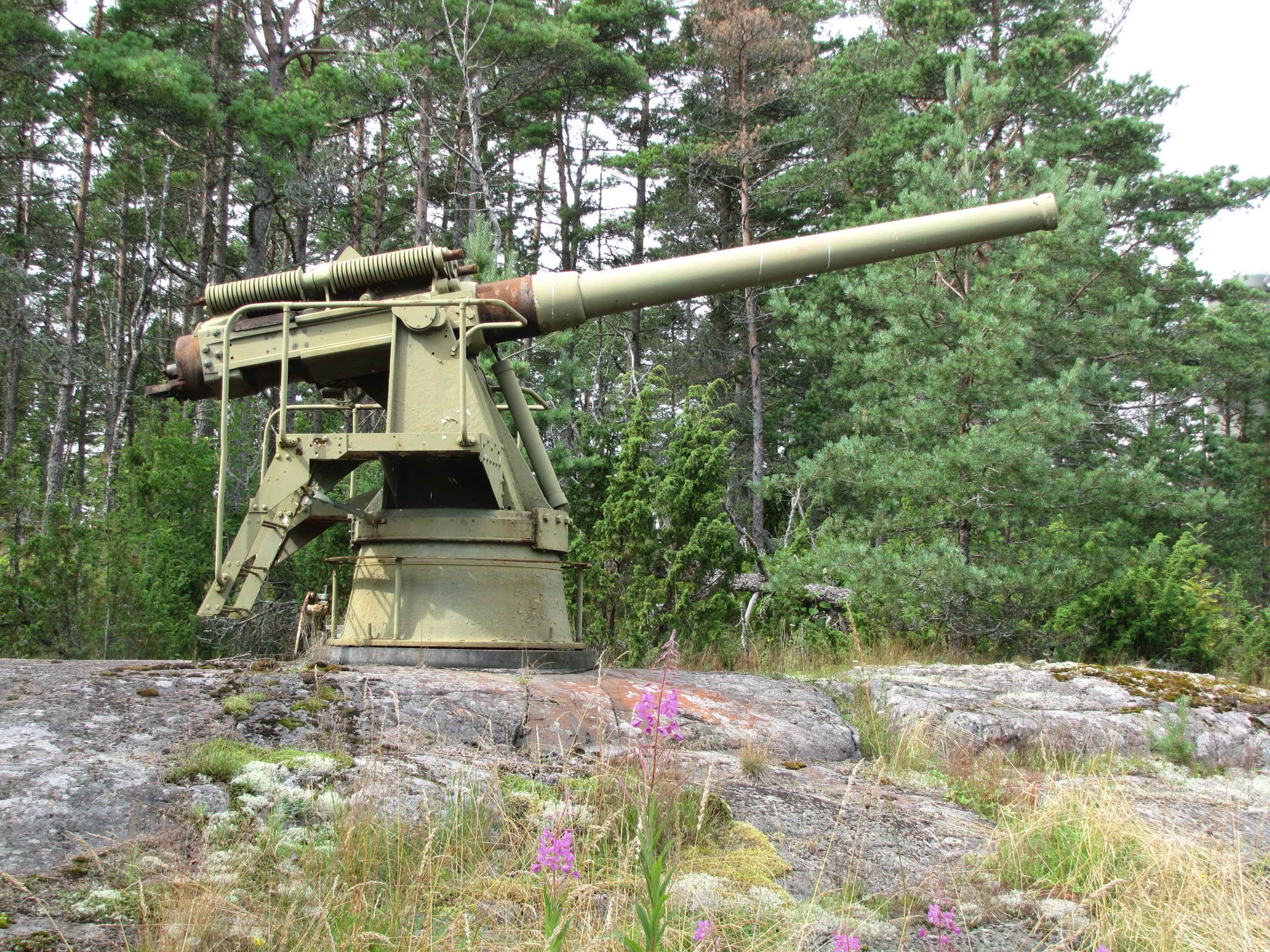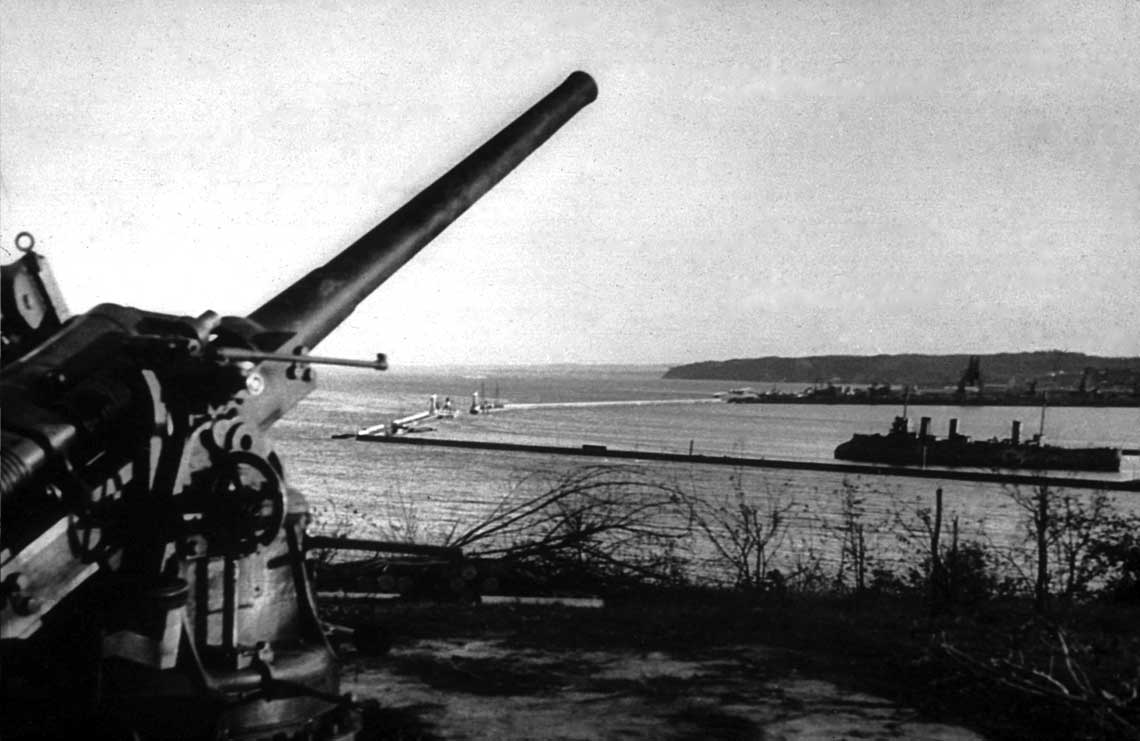
Battery Kane and its forgotten commander

Battery gun No. 1 after the end of the fighting.
The 80th anniversary of the outbreak of World War II this year is a good occasion to recall the history of the first coastal artillery battery of the Second Polish Republic. Throughout the entire post-war period, in the literature on this issue, this part was treated somewhat "disparagingly", highlighting the achievements of the 31st battery of them. H. Laskowski in Hel. This period was not very joyful for the commander of this battery, cap. Anthony Ratajczyk, whose character has not been mentioned in most studies.
It so happened that in research on the topic, the authors have so far relied solely on reports written after the end of the war, without resorting to archival materials. Which is strange, considering that, also because of the functions they performed at the time, they certainly had easier access to surviving documents.
The publication of a hitherto unknown story about Mar. Stanisław Brychce allowed the completion of the state of knowledge about the battery, but its author does not in any way indicate that he performed the function of commander, which has been reported in the literature so far. Despite the achievements of the ensign (both in the interwar period and in September 1939), it is necessary to "restore history" to the figure of the captain. A. Ratajczyk, Commander of the XNUMXth Coastal Artillery Battery, commonly known as the Kane Battery.
Before the creation of the battery
After the disbandment of the Coastal Artillery Regiment, the Polish coast for several years lost any permanent protection both from the sea and from land. The slowly building fleet could not provide effective defense of the future base planned in Gdynia Oksiwi. Until the early 30s, many defense enhancement projects were developed, but their implementation was always hampered by the lack of funds to finance them.
Developed in 1928 (in agreement with the 1929th department of the General Staff), the coastal defense plan provided for three stages of implementation (stretched over 1930-1), with the completion of the first of which partial defense was provided in the event of a war with Russia XNUMX. The end of the second stage provided for complete defense in the event of a conflict with Russia, and the end of the third was intended to provide defense for a period of two months in the event of a simultaneous conflict with Russia and Germany.
At the first stage, this plan involved the deployment of a battery (actually a semi-battery) of 100-mm guns in the Gdynia area. Its creation was facilitated by the fact that the fleet already had the tools necessary to equip it, which had been dismantled from the decks of gunboats a few years earlier.
These guns (purchased under a "French" loan for 210 francs) arrived in Poland in January 000 aboard the ORP transport ship Warta. Together with them 1925 bronze shells (1500 francs), 45 steel shells wz. 000 with fuses (1500 Fr.) and 05 225 projectiles with expelling charges (000 3000 Fr.) 303. Additional 000 training cartridges (caliber 2 mm) for plug-in barrels, wooden mock-ups of projectiles, breech cut, device for checking the line of sight and four sets of instruments for checking the degree of barrel wear were purchased.
After a short use on gunboats, both guns were dismantled and transferred to warehouses in Modlin. For their use, a project was developed for installation on towed artillery crypts. This project, for unknown reasons, did not receive recognition, and in the wishes of KMW for the 1929/30 financial year there is a proposal to place them on railway platforms. Interestingly, the KMW planes themselves were planned to be leased from the railway, since, as was justified, their purchase would have been too expensive. In the draft budget, the cost of renting a room is set at PLN 2 per night. The total cost of setting up branches, including rent, was to be PLN 188.
Unfortunately, the requested funds were not provided, so for the next financial year (1930/31) the position of mounting 100 mm guns appears again, this time at permanent positions near Oxivier. The very small amount planned for this purpose is puzzling, i.e. PLN 4000,00 25 plus PLN 000,00 3 for the purchase of a 1931 meter rangefinder for the planned battery. It is possible that this amount was supposed to ensure the start of work on the future battery, since the draft budget for 32/120 provided for an amount of PLN 000,00 to complete the unfinished investment.
The paucity of the surviving archival documentation does not allow us to establish a specific amount spent on the construction of the battery. Some indication of the expenses incurred may be the "Plan for the implementation of the budget for 1932/32", in which 196 złoty970,00 were spent for these purposes. However, this is not the final amount, because according to the "List of loans for the budget period 4/1931" the cost of building the battery was determined in the total amount of PLN 32, of which PLN 215 was not identified.
battery lift
The battery was changed to the easternmost part of Kępa Okzywska (on a high cliff) so that the guns could be used to block the entrance to the port at Gdynia Oksivie. This place was not chosen by chance, because already in the first half of the 20s, it was planned to install a salute battery in this area. In January 1924, the Navy Command took steps to obtain from the Merchant Marine Authority the land belonging to the lighthouse at Oksiva. This idea was rejected by the Directorate, who argued that the site chosen by the fleet command was the salary of the lighthouse keeper and that the installation of a salute battery would endanger the lighthouse itself, in particular its light apparatus.
The appointed visiting commission stated that there was no danger to the functioning of the lighthouse, and another plot of land should be offered to the lighthouse keeper. In the end, the salute battery was never built, and the area next to the lighthouse in the early 30s was used to build a battery, and the lighthouse itself (after it was extinguished in 1933) was transferred to the Navy.
The battery design was developed by Cpt. English juice. Mechislav Krushevsky from the Office of Coastal Fortifications, as well as under his leadership, guns were assembled in positions. The guns were placed on open guns, and in the rear (on the slope of the gorge) they arranged two shelters for ammunition (one for missiles, the other for propellant charges). Right next to the cargo shelter, an ammunition rack was built, with the help of which rockets and cargo rose to the level of the artillery station a dozen meters higher. At present, it is difficult to accurately reproduce how this elevator looked and worked, but some clues on the subject can be found in a German agent's report in September 1933. This agent describes this device as a "paternosterwerk", that is, a circular elevator that acted as a bucket conveyor. A small sanitary shelter was built not far from the artillery outpost, in which ammunition was stored for immediate use.
The exact date of commencement of the construction of the battery is unknown; again, the reports of the German agents operating on our coast can serve as a definite indication of the dating. In the reports compiled in April 1932, we find information that the battery area is already fenced off with a barbed wire fence, and the attached photographs show cannons installed in cannons and disguised. Later in the report, the agent reports that the facility is still expanding with munitions shelters, as evidenced by excavations made in the side of the ravine. In June of this year, the agent reported that the entire slope to the bottom of the gorge was covered with a camouflage net, from which work on the shelter (s) of ammunition was visible, which was to be completed in August (which was reported in a separate report).
Another indication of the start of construction may be the above-mentioned "Budget Implementation Plan for 1931/32" developed by KMW. According to it, the first sums (PLN 20) for the construction of the battery were to be spent in June 000,00, and the last sums (PLN 1931) in February of the following year. It is worth mentioning here that throughout the entire interwar period, field agents overestimated the number and caliber of guns installed at Cape Oksivye. In the reports we can find positioning information, including a battery of guns: 6970,00 x 2mm, 120 x 2mm and 150 x 2mm.
For the needs of the battery under construction, at the end of 1931, the Coastal Artillery Company was created (under the command of Lieutenant Mar. Jan Grudzinsky), whose task was to protect the area of the battery under construction and its subsequent maintenance6. The next company commander was a lieutenant. Bogdan Mankovsky, who was replaced by a lieutenant in 1934. Karol Mizgalski performed this function until the dissolution of the unit. The company included: the 37th "Danish" battery, the 1933rd "Greek" battery and the XNUMXrd "Kanet" battery, for which XNUMX sailors were provided for in the ranks. The position of commander was to be held by an officer with the rank of lieutenant, the position of battery chief was intended for a professional boatswain, as was the position of a fireman. Initially, the unit was subordinate to the Commander of the Fleet, and from April XNUMX to the Naval Coastal Command.

